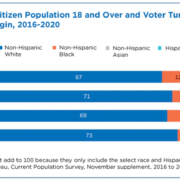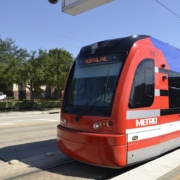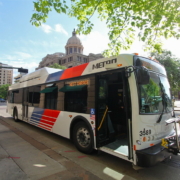Should You Vote for MetroNext 2040?
Back in January, I wrote an op-ed in the Chronicle giving MetroNext’s draft 2040 plan a grade of B-, with the primary penalty being too many miles of extremely expensive, low-ridership light rail, including two redundant lines to Hobby airport. Since then, they’ve made some good improvements to the plan, the most dramatic being consolidating two light rail lines to Hobby down to one and saving hundreds of millions of dollars in the process. BRT to Hobby would have been even more cost-effective, but would have forced an awkward transfer to the existing LRT lines halfway along, so I understand the choice of light rail for Hobby.
The new $7.5B plan includes approximately 16 additional miles of light rail ($2.1 billion), 75 miles of BRT (bus rapid transit) service ($3.23 billion), 110 miles of new HOV lanes ($1.56 billion, the best investment in the plan), 290 miles of BOOST network for high-ridership, frequent bus routes offering speed and reliability ($179 million), 21 new or improved park-and-rides, and additional service enhancements ($414 million).
On Tuesday November 5th, you’ll have the option to vote to authorize Metro to issue $3.5 billion in bonds to execute this new plan. The Greater Houston Partnership business community supports it, but other opposition has formed. While it’s not my dream plan, I do support it and hope you will as well. On balance, it is a cost-effective, pragmatic plan, which is very rare when you look at other transit agencies nationally. There has been some truly crazy stuff happening out there (like LA, Seattle, Denver, and Nashville), and Houston should count itself lucky to have a plan like this. Even if you find yourself averse to parts of it, I strongly encourage supporting it, because honestly – based on what I’ve seen happening around the country – there’s a real risk of something much worse coming forward in the future if we reject this one. This will lock Houston into a solidly good plan for the next 20 years while other cities light bonfires of tax dollars on ineffective rail projects. Don’t let the perfect be the enemy of the good.
Unfortunately, I couldn’t convince Metro to add the moonshot aspiration or commit to transitioning to free fares (yet). The farebox is only 4.9% of their budget, so it’s totally affordable, and Commissioner Radack called for free fares last week to help reduce congestion. Kansas City might beat us as the first major city to move to free transit, and Forbes and Aaron Renn have argued for it as well. But Metro is at full capacity during peak hours, so they can’t handle the extra demand free would generate. Instead, I’d advocate for free fares during off-peak hours immediately, along with a multi-year plan to ratchet fares down to zero while increasing capacity to handle the new demand. The advantage of going to off-peak free fares immediately would be that it could attract flexible riders that would otherwise take their trip during peak hours, and that frees up those peak hour seats for new riders. I’ll discuss more on the advantages of free fares in a future post.
After the election, I’m also hoping Metro will study what Indianapolis is doing to see how they’re doing BRT for $10m/mile instead of our $40m/mile. I think part of our extra cost is dedicated right-of-way, but there might be aspects of their approach we can learn from or even apply to certain routes where the cheaper approach can be effective, thus allowing us to get more miles of BRT for the same money. More on Indy’s plan at CityLab.
Final grade: A-, but solidly worth your vote!
Tory Gattis is a Founding Senior Fellow with the Center for Opportunity Urbanism and co-authored the original study with noted urbanist Joel Kotkin and others, creating a city philosophy around upward social mobility for all citizens as an alternative to the popular smart growth, new urbanism, and creative class movements. He is also an editor of the Houston Strategies blog.





 Roy Luck
Roy Luck

